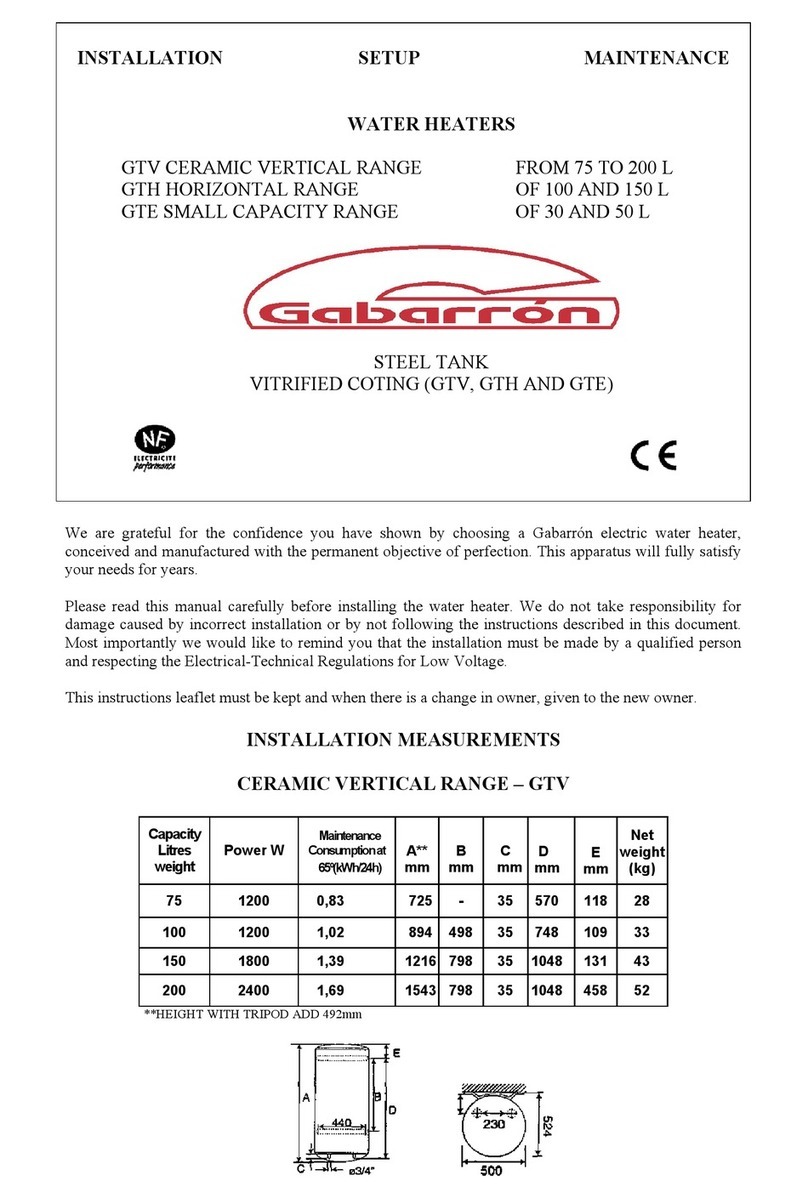1.- IMPORTANT INFORMATION
Please read these instructions before
installing or using this appliance for the first
time.
This appliance is only intended for
household use.
The installation must be carried out in
accordance with the current local electrical
regulations. Any installation or reinstallation
has to be carried out by an experienced
technician.
Dielectric bushingsmust be fitted to the
water inflow and outlet pipes. The warranty
will not cover damage caused by them not
being fitted.
The use of this water heater is forbidden in
areas where there are explosive gases or
flammable substances.
Please check that the voltage in the rating
label fits the power supply.
This appliance must be grounded.
Keep the supply cable away from the hot
parts of the water heater.
Improper handling of the appliance may
result in serious injury.
Do not pull on the cable but on the plug to
disconnect the water heater from a socket.
Do not use extension leads.They can result
in overheating and cause a fire.
Never touch the immersion heater when
bare-footed or if your hands are wet or
damp.
The water heater must be unplugged when
it is installed and being cleaned.
The appliance should not be installed just
below an electrical receptacle.
The appliance must be installed in such a
way that it is impossible for anyone using a
bath or shower, to touch the controls.
Keep combustible materials, such as
furniture, pillows, bedding, papers, clothes,
etc. and curtains at least 80cm from the
front, sides and rear of the water heater.
Never dismantle the immersion heater
components or replace them with others
that do not meet the safety requirements.If
the power cable is damaged, it must be
replaced by the manufacturer or by its
official agent to avoid any hazard.
This appliance can be used by children
aged from 8 years and above and persons
with reduced physical, sensory or mental
capabilities or lack of experience and
knowledge if they have been given
supervision or instruction concerning the
use of the appliance in a safe way and
understand the hazards involved.
Children must not play with the appliance.
Cleaning and user maintenance must not
be made by children without supervision.
In time, the presence in the air of smoke,
dust and pollutionmay stain the walls and
areas close to the appliance.
Do not use outdoors.
The symbol on the product or in its
packaging indicates that this product may
not be treated as household
waste. Instead it shall be handed
over to the applicable collection
point for the recycling of electrical and
electronic equipment. By ensuring this
product is disposed of correctly, you will help
prevent potential negative consequences for
the environment and human health, which
could otherwise be caused by inappropriate
waste handling of this product. For more
detailed information about recycling of this
product, please contact your local city office,
your household waste disposal service or the
shop where you purchased the product.
These instructions are only valid in the EU
member states.





























